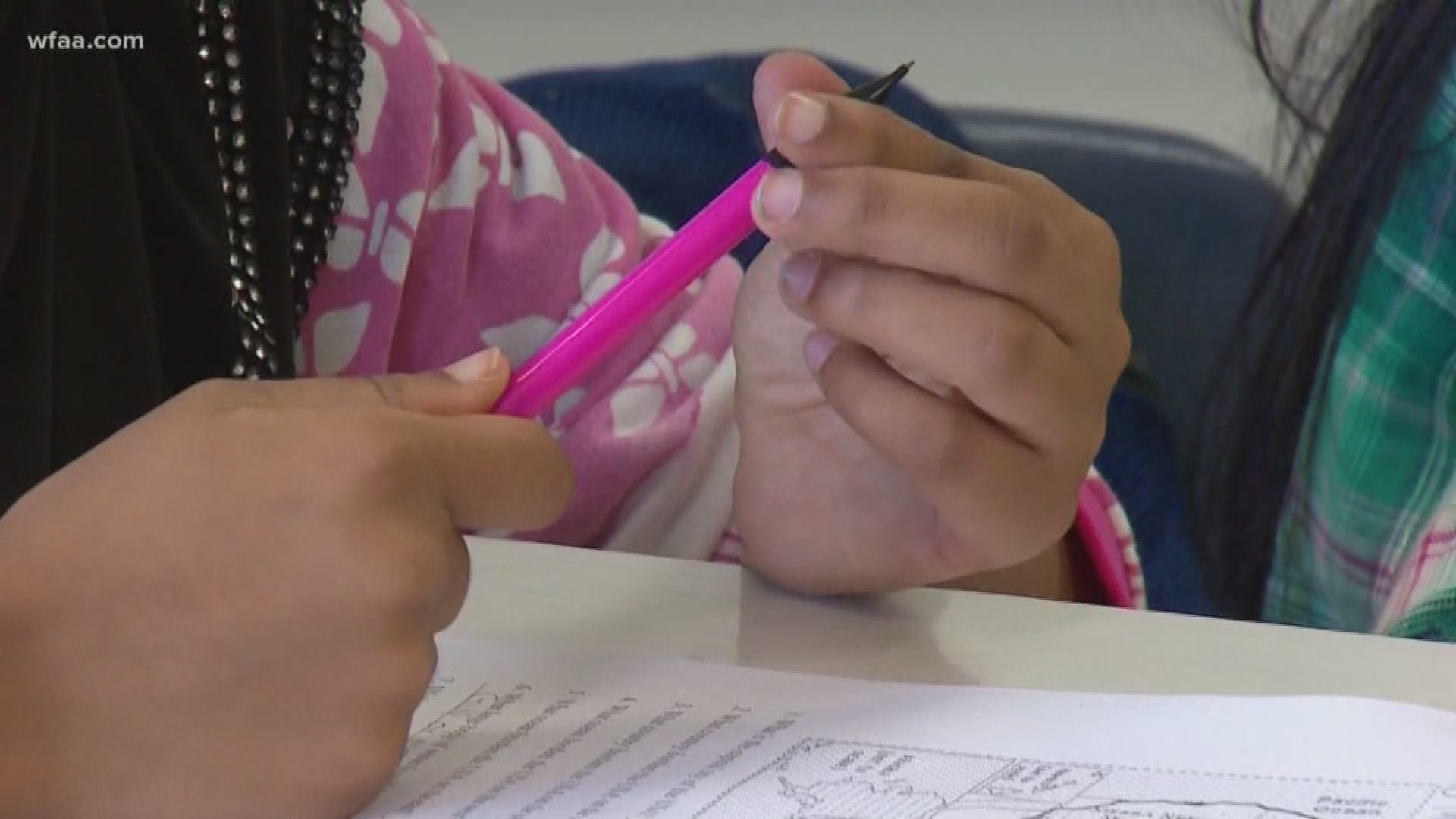School districts in North Texas are voicing out their concerns of a newly developed grading system that was released Wednesday morning ahead of the upcoming school year.
Some educators have expressed the limitations of the state's accountability ratings. The school districts have received a rating of A, B, C, D, or F for overall performance instead of last year's ratings of "standard met" or "improvement needed."
In addition, each campus has been given a numerical overall grade that corresponds to a letter grade (81 is a B, for example).
Some of the larger districts have been graded as follows:
Rated D: DeSoto ISD
Rated C: Fort Worth ISD, Arlington ISD, Cleburne ISD, Corsicana ISD, Duncanville ISD, Ennis ISD
Rated B: Dallas ISD, Forney ISD, Garland ISD, Granbury ISD, Grand Prairie ISD
Rated A: Frisco ISD, Highland Park ISD, McKinney ISD, Sunnyvale ISD, Wylie ISD
DeSoto ISD, which received a D rating, is critical of the state's new accountability system.
"We are so much more than a letter grade we have students that excel at fine arts in technology and hands on learning and you can't capture that in one test in one day," said Michelle Schwind, DeSoto ISD Assistant Superintendent.
DeSoto isn't the only district that believes the new A through F grades aren't fair. Even districts with an A, like Sunnyvale ISD, believe the results rely too heavily on the STAAR test and oversimplify complex issues.
That's why many districts, like Dallas ISD, which said its B rating showed how much it had improved over the last few years, spent Wednesday highlighting their own local performance reviews as well.
"We may be happy with our results but as you go through the state in unpacking this, you may see that the devil's in the details and how do you explain this to everybody," said Hinojosa.
Texas Education Administrator Mike Morath says the state's school accountability system has never been more fair.
"We as an agency are committed to the concept of improvement," said Morath. "We spent over 30 months interacting with every school district in the state."
The new A-F is heavily rooted in STAAR test results, but the rating system now includes college, career or military readiness and graduation rates. Districts also get higher grades if students from all races and socioeconomic backgrounds are doing welll, and they are measured on year to year improvement.
"What do we do to wrap our arms around the lowest performing schools, how can we in public education support those schools as much as possible," said Morath.
Morath wants to cut the number of D and F schools in half over the next five years, but did not elaborate on how he plans to accomplish that goal.
Here's an overview of the methodology behind the new rating system and what each grade means, per the Texas Education Agency.
A – Exemplary performance
B – Recognized performance
C – Acceptable performance
D – In need of improvement
F – Unacceptable performance
The A-F ratings are based on three factors, or "domains," according to the TEA. "Student achievement" and "school progress" combine for 70 percent of the rating, while "closing the gaps" makes up 30 percent.
• Student achievement: For elementary and middle schools, 100 percent of the student achievement section is determined from STAAR testing, the annual State of Texas Assessments of Academic Readiness tests. For high schools and overall district ratings, the student achievement section is determined from three areas: STAAR testing (40 percent); College, Career, and Military Readiness (40 percent); and Graduation Rate (20 percent).
• School progress: This section is divided into two evaluations – academic growth and relative performance. Academic growth measures how students improve from year to year, while relative performance measures a school's or district's academic performance relative to other districts with similar economically disadvantaged percentages.
• Closing the gaps (30%): This section factors in academic achievement and graduation rates but also factors in "differentials among racial/ethnic groups, socioeconomic backgrounds and other factors," evaluating the performance of economically disadvantaged students, students receiving special education services, English learners and other student groups, according to the TEA methodology.
In an open letter posted last Wednesday, Superintendent Dr. Robin Ryan of Grapevine-Colleyville ISD released a statement on the upcoming results. "I am all for accountability, but it needs to be based on more than just a snapshot of how our students perform on one day," she wrote.
Dr. Ryan said the grading system doesn't display a holistic picture of the school district's success.

